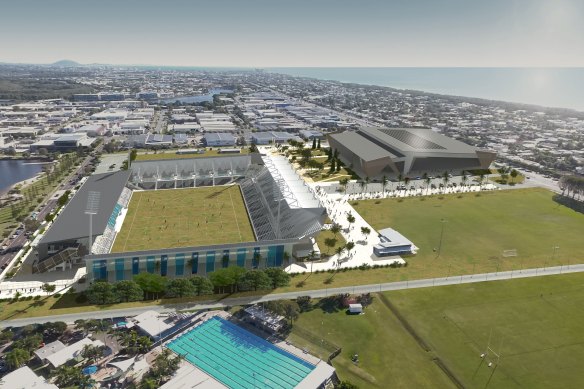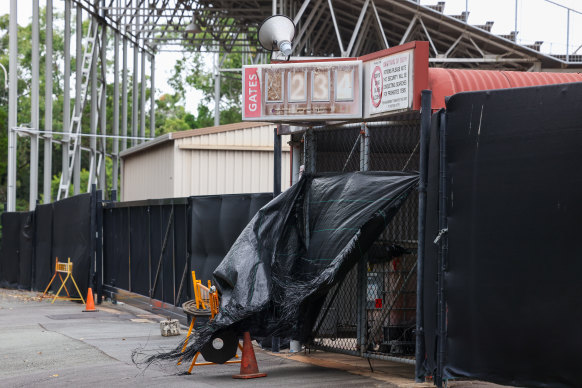source : the age
The first tender requests for Olympic venues will go out next week, Infrastructure Minister Grace Grace said on Friday as she continued the Miles government’s defence of its controversial decision to rebuild the Queensland Sport and Athletics Centre as the Games’ main track and field stadium.
Infrastructure Minister Grace Grace says $500 million worth of Olympic tenders will go out next week.Credit: Jamila Toderas
Speaking at Newstead on Good Friday, Grace said about $500 million worth of tenders would go out next week for three Sunshine Coast venues and improvements at the Sleeman Sports Complex at Chandler, built for the 1982 Commonwealth Games.
“Chandler alone will be receiving an over $260 million update and facelift, which will be fantastic for that facility,” she said.
In a review commissioned by Premier Steven Miles, former Brisbane lord mayor Graham Quirk recommended a new Olympic stadium be built at inner-city Victoria Park, close to transport links and with a less restrictive footprint than the Gabba, which had been slated as Brisbane 2032’s main venue.
Quirk made 30 recommendations, 27 of which the Miles government accepted – including those set to go to tender next week.

The proposed Sunshine Coast Stadium upgrade and the new arena at Kawana.Credit: Sunshine Coast Council
But Miles rejected Quirk’s recommendation for an oval stadium at Victoria Park to host athletics, instead pledging to use QSAC at Nathan, about 12 kilometres south of the CBD.
That decision has come under criticism for what detractors say is a lack of post-Games legacy for Brisbane.
On Friday, Grace said QSAC would be an “absolute fantastic legacy” for Brisbane.
“It needs an upgrade, it needs an uplift, and it will be about a 40,000 capacity stadium by the time we’re ready for the Olympic and Paralympic Games,” she said.
“[It will have] an absolute fantastic legacy, with transport networks that will also serve the university and the hospital and will have this lasting benefit here in Queensland for decades to come.”

Forgotten and unloved: QSAC on Brisbane’s southside has been earmarked for a $1.6 billion Olympic improvement.Credit: Pete Wallis
The Quirk review estimated the cost to be $1.6 billion, which did not include the cost of transport links, which Lord Mayor Adrian Schrinner estimated at $400 million.
Quirk’s Victoria Park recommendation would have replaced the Gabba as Brisbane’s primary oval stadium.
About $1 billion was estimated to bring the Gabba up to code.
Grace said the true cost of the QSAC project remained an unanswered question.
“We have to go through a business case process because we really need to know exactly what is required,” she said.
“There is a question mark over about a billion dollars, and we’re going to use the expertise of the International Olympic Committee, their infrastructure experts, to come in and to talk about what exactly was the additional funding that was mentioned in the [Quirk] review and how do we best deliver for that facility.
“But that is going to be an outstanding athletics venue for the Olympic Games. It will have a stadium feel, there is no doubt we’ll have transport networks there, but we do have to work on the business case and the delivery authority will be the ones that will be delivering that outcome in line with the legislation.”
When asked whether QSAC would be a rebuild or an upgrade, Grace said it would be a “little bit of both”.
“It will be a fantastic upgrade and it will be a rebuild of the stadium and it will be a wonderful facility,” she said.
“It will be a beautiful stadium facility for the athletics … It will be a venue there that will remain in situ.
“It will be a venue where we don’t have to tear off the track and will have been permanent stadium facilities there.”
The stadium was expected to hold 40,000 spectators in mostly temporary stands – the smallest Olympic stadium since the 1928 Amsterdam Olympics.
Post-Olympics, it would have a permanent capacity of 14,000, making it suitable for only minor events, such as inter-school sports carnivals or national and state championships.

